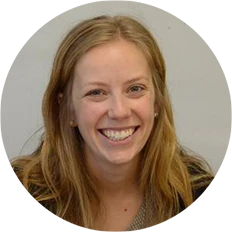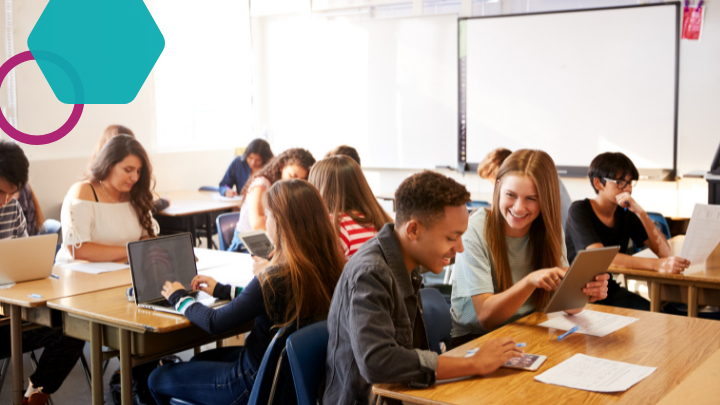We’re all eager to return to our classrooms: to see our students, to set up our rooms, and to return to some normalcy. However, returning to school this fall is unlike any other back-to-school return. Research suggests that by September, most students will have fallen behind where they would have been if they had stayed in classrooms, with some losing the equivalent of a full school year’s worth of academic gains. And amidst a summer of anti-racist protests, we also know that the existing racial disparities in access to educational resources only widened during distance learning.
As an instructional coach, I have begun to have conversations with teachers, coaches, and leaders who are rethinking their practice to respond to the “coronavirus slide.” As a teacher myself, I am reflecting on how to create a classroom that empowers students to take ownership of their learning. Below are some ideas, whether you are a teacher, coach, or leader, to use data to drive your instructional decisions and create spaces to encourage student ownership this fall.
For Teachers: How to Use Data to Assess Needs and Guide Instruction
In my work with teachers and in my own practice, I am hoping to change my mindset from “We lost so much time; my students are so far behind!” to “This is a great opportunity to personalize learning for my students.” I want to create opportunities for my students to take ownership of their learning goals, to create their own learning paths, and to monitor (and celebrate) their progress. What does this look like?
- Analyze assessment data to get to know your students. It’s important to use student assessment data to help you create personalized goals for students. The Performing Needs Assessment or Gap Analysis Strategy provides a template to dive into student data and help you understand your students’ needs.
- Rethink instruction. If a lot of students are behind where they need to be academically, you may need to rethink how you will help all students meet their goals. This could look like:
- Creating a mastery-based class where students can move at their own pace through the skills and standards of the class. Consult the BetterLesson strategies Progress and Mastery Tracking and Systems of Assessment to Demonstrate Mastery for ideas.
- Making time for students to practice standards and skills they haven’t yet mastered, perhaps by providing one day a week (or more) just for this activity. For example, four days a week could resemble what your class usually looks like, and the fifth day would be structured so that students could choose the skills they want to practice. Consult the Better Lesson strategy Yoda Master Self-Paced Assessments for more ideas.
- Embedding common missing skills or content knowledge into your daily lessons. For example, create a plan for your warm-ups/do-nows to help students practice the skills that they need remediated.
- Creating opportunities to provide students 1:1 or small group support. Consider restructuring your classroom to allow students more time to work independently. This will then allow you time to pull students for 1:1 or in small groups to reteach content or provide mini-lessons on specific skills. Consider the Better Lesson strategy Small Group Sessions or Designing Group Stations for Station Rotations for more ideas.
- Create a plan to communicate often with families about students’ progress. Families are also very concerned about the “coronavirus slide.” Set up clear systems of communication with families to discuss students’ goals, progress, and learning plans.
For Instructional Coaches: Support Teachers with Data-Driven Instruction and Needs Assessments
In this time of uncertainty, teachers need coaches to help them center around their goals for students and reflect on their practice. It will be easy this fall for teachers to become overwhelmed by student data or the potential for another round of remote learning. Our role as a coach is to help teachers create student goals, develop systems to help all students achieve their goals, and reflect on what’s working (and what’s not). This means:
- Help teachers analyze and respond to student data. Support teachers to analyze student data to inform instruction using data-protocols and note-taking templates.
- Use data-driven goals to center student learning. Facilitate data-driven instruction by using these student goals as a touchstone to center student learning. Consider using the goal setting and reflection strategy.
- Support teachers to reflect on their practice, identify what’s successful, and pivot to best support all students. Consult the strategy Planning for a Successful Launch of Coaching to help establish reflective routines in your coaching sessions.
For School Leaders: Create a Culture of Collaboration and Data-Driven Instruction
As this school year wrapped up, my conversations with school leaders across the country focused on rethinking what school will look like amidst COVID-19. But part of this conversation going forward has to be rethinking what support will look for teachers and how leaders can be a resource for teachers as they navigate student data. For example:
- Support assessment literacy. If your school or district is pushing for new assessments in the fall, help teachers get familiar with the assessment, as well as how to administer it to students and use it to backward plan instruction.
- Rethink collaborative planning time or PLC time. Teachers are eager to collaborate, but collaborative planning time might look different than it did in previous years. Encourage teams to create goals around data-driven instruction, personalized learning, or competency-based systems. Provide protocols and suggested agendas to facilitate this work. Consult the Better Lesson strategies Building a Professional Learning Community and Establishing Goals and Roles for Professional Learning Communities.
- Ask teachers what they need from you. It sounds simple, but before compiling a list of resources or suggesting a book to read, take time to check in with teachers individually or in small groups to really listen to what their unique needs are this school year. This shouldn’t be a one-time August conversation, but rather ongoing listening sessions. This will allow you to be an adaptive leader and respond directly to the needs of your teachers and students.
This fall, our task as teachers, leaders, and coaches is to re-prioritize student learning in a way that empowers all students to be active agents in their own learning process. As teachers, this means using data to help students identify their goals and then restructuring your classroom to support all students to meet their goals. As coaches, this means helping teachers to reflect on their practice. And as leaders, this means pausing to fully support the needs of teachers as they analyze and respond to student data. While this fall will have many challenges, it will also be an opportunity to pause and rethink how data-driven instruction can support goal setting and therefore help students take ownership of their learning.
BetterLesson supports schools and districts as they face the challenge of creating flexible, equitable, student-centered learning environments – whether learning happens in-school, online, or in a hybrid model.
Explore Learning Experiences







